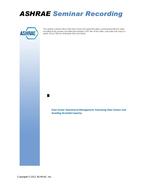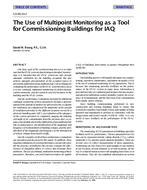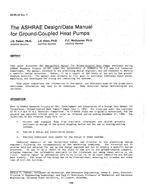Presents a study examining the effectiveness of using CO2-based demand controlled ventilation to provide adequate indoor air quality with minimum energy use. A detailed building energy analysis program (ENERPASS) was combined with a contaminant-level prediction program (CONTAM87) to perform the analysis. The combined program was used to evaluate the annual heating and cooling energy consumption and CO2 and formaldehyde concentrations. The assessment was made on a mid-size commercial building designed to comply with ASHRAE Standard 90.1. Three separate HVAC systems were studied – single zone, multizone and variable air volume. The simulations were made for five ventilation control strategies. Presents the findings and makes recommendations for the use of CO2-based demand controlled ventilation in office buildings.
KEYWORDS: year 1996, Ventilation, offices, research, USA, demand controlled ventilation, formaldehyde, carbon dioxide, indoor, air quality, energy conservation, computer programs
Citation: ASHRAE Trans. 1996, vol.102, part 2, paper no.3988 (RP-740), 80-88, 6 figs, 4 tabs, refs.
Product Details
- Published:
- 1996
- File Size:
- 1 file , 1 MB
- Product Code(s):
- D-16375


